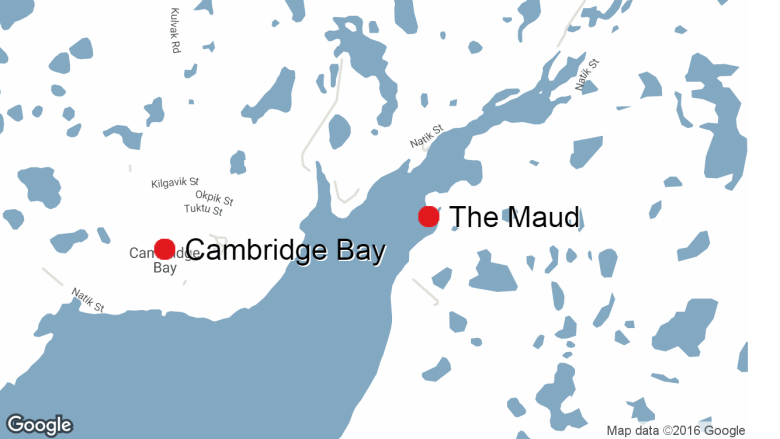The Maud floats again: Norwegians bring long-sunken ship to surface
Roald Amundsen's ship sank in 1930 near what is now Cambridge Bay

A team of Norwegians has recovered the wreckage of a ship that once belonged to famed Arctic explorer Roald Amundsen and that sank off the coast of Nunavut more than eight decades ago.
The Maudwas liftedfrom shallow waters in Cambridge Bayat around 3 p.m. MT Saturday. The team had been attempting to recover the wreckage for six years.
- Arctic shipwreck will not leave Cambridge Bay this year
- Norwegians to documentMaudwreck's last winter inNunavut
"This is amilestone, of course, because we have been wanting to lift her ever since we started to think about this project," saidJan Wanggaard,project manager for the Norway-based organizationMaudReturns Home. "To actually see her releasing from the seabed it's a great experience."

Lifting her up
The team plans to lift the ship completely out of the water and tug her back to Norway; making her float again, while the hull is still below the surface, wasthe first step.
Wanggaard says for the past month, the team has been slowly inflating whathe calls air bags or balloons to help her rise to the surface, unsure of when that would be exactly.
Wanggaard was in the water inflating one of the balloons when it happened.

"I saw it was more dusty in the water than normal and I thought, 'Ah, that's a bit strange,'" Wanggaard said. "And then I came up to the surface and I saw my friend with a big smile."
Within the next few weeks,Wanggaard and his team will work on lifting the ship completely out of the water, using a barge they tugged across the Atlantic from Norway.
Wanggaardsaysthey'll submerge the barge, float Maud overitand slowly bring the barge back up to the surface, carrying the ship.
"She's much more heavy than we actually anticipated ... and that means it might be that we have to do the lifting process very slowly so she can lose some weight by being drained from water," Wanggaard said.
Years of work still ahead
It will still be years before the Norwegian team can bring the ship back toNorway, butWanggaardhas already looked at two possible routes home:eitherthrough the Northwest Passage and Greenland, or "going over Russia because that's where theMaudcame from originally."

Wanggaardhesitates to put a date onMaud'sarrival in Norway, but saidit would be great if it coincided with some significant anniversaries like 2017, 100 years sinceshe was launched, or December 2018, 100 years since she sailed from Norway.
Either way, Wanggaard says the work and the wait is worth it.
"This was his [Amundsen's] ship, built for him completely and it was a very sad end to that history until now, I think.
"So in a way we are all very happy to give Mauda better end ... and to honour Roald Amundsen's incredible achievements."
With files from Shannon Scott












_(720p).jpg)


 OFFICIAL HD MUSIC VIDEO.jpg)
.jpg)



























































































